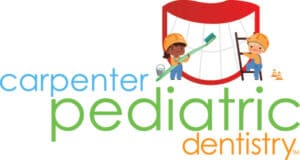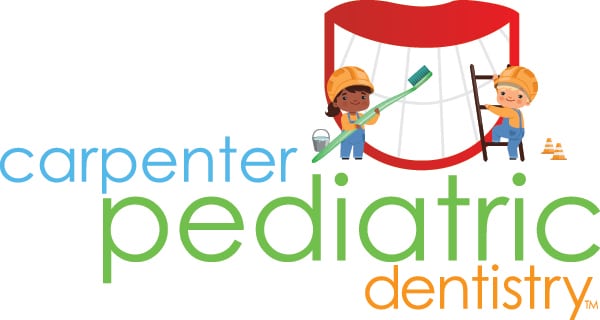- Healthy Habits
It’s important to start healthy habits early. Your child’s baby teeth are at risk for decay as soon as they first appear—which is typically around age 6 months. It most often occurs in the upper front teeth, but other teeth may also be affected. In some cases, infants and toddlers experience decay so severe that their teeth cannot be saved and need to be removed.
Healthy Habits Start Early
The good news is that tooth decay is preventable! Most children have a full set of 20 primary teeth by the time they are 3-years-old. As your child grows, their jaws also grow, making room for their permanent teeth.
Cleaning Your Child’s Teeth
- Begin cleaning your baby’s mouth during the first few days after birth by wiping the gums with a clean, moist gauze pad or washcloth. As soon as teeth appear, decay can occur. A baby’s front four teeth usually push through the gums at about 6 months of age, although some children don’t have their first tooth until 12 or 14 months.
- For children younger than 3 years, caregivers should begin brushing children’s teeth as soon as they begin to come into the mouth by using fluoride toothpaste in an amount no more than a smear or the size of a grain of rice. Brush teeth thoroughly twice per day (morning and night) or as directed by a dentist or physician. Supervise children’s brushing to ensure that they use of the appropriate amount of toothpaste.
- For children 3 to 6 years of age, caregivers should dispense no more than a pea-sized amount of fluoride toothpaste. Brush teeth thoroughly twice per day (morning and night) or as directed by a dentist or physician. Supervise children’s brushing to minimize swallowing of toothpaste.
- Until you’re comfortable that your child can brush on his or her own, continue to brush your child’s teeth twice a day with a child-size toothbrush and a pea-sized amount of fluoride toothpaste. When your child has two teeth that touch, you should begin flossing their teeth daily.
Teething
Teething is one of the first rituals of life. Although newborns usually have no visible teeth, most baby teeth begin to appear generally about six months after birth. During the first few years of your child’s life, all 20 baby teeth will push through the gums and most children will have their full set of these teeth in place by age 3. A baby’s front four teeth usually erupt or push through the gums at about six months of age, although some children don’t have their first tooth until 12 or 14 months. As their teeth erupt, some babies may become fussy, sleepless and irritable, lose their appetite or drool more than usual. Diarrhea, rashes and a fever are not normal symptoms for a teething baby. If your infant has a fever or diarrhea while teething or continues to be cranky and uncomfortable, call your physician.
First Dental Visit
As soon as your child’s first tooth appears, it’s time to schedule a dental visit. The ADA recommends that the first dental visit take place within six months after the first tooth appears, but no later than a child’s first birthday. Don’t wait for them to start school or until there’s an emergency. Get your child comfortable today with good mouth healthy habits.
Although the first visit is mainly for your pediatric dentist to examine your child’s mouth and to check growth and development, it’s also about your child being comfortable. To make the visit positive:
- Consider making a morning appointment when children tend to be rested and cooperative.
- Keep any anxiety or concerns you have to yourself. Children can pick up on your emotions, so emphasize the positive.
- Never use a dental visit as a punishment or threat.
- Never bribe your child.
- Talk with your child about visiting the dentist.
During this visit, you can expect the dentist to:
- Inspect for oral injuries, cavities or other problems.
- Let you know if your child is at risk of developing tooth decay.
- Clean your child’s teeth and provide tips for daily care.
- Discuss teething, pacifier use, or finger/thumbsucking habits.
- Discuss treatment, if needed, and schedule the next check-up.
Fluoride
Fluoride is a mineral that occurs naturally in all water sources, including oceans, rivers and lakes. Fluoride is also added to some community tap water, toothpastes and mouth rinses. Infants and toddlers who do not receive an adequate amount of fluoride may be at an increased risk for tooth decay since fluoride helps make tooth enamel more resistant to decay. It also helps repair weakened enamel. Bottled water may not contain fluoride; therefore, children who regularly drink bottled water or unfluoridated tap water may be missing the benefits of fluoride. If you are not sure if your tap water has fluoride, contact your local or state health department or water supplier.
Note: Discuss your child’s fluoride needs with your pediatric dentist or pediatrician. They may recommend a fluoride supplement if you live in an area where the community water is not fluoridated.
Pacifiers
Infants and young children may suck on thumbs, other fingers or pacifiers. Pacifiers dipped in sugar, honey, juice or sweetened drinks, can lead to tooth decay. Tooth decay can also begin when cavity-causing bacteria pass from saliva in a mother or caregiver’s mouth to the infant. When the mother or caregiver puts the baby’s feeding spoon in her mouth, or cleans a pacifier in her mouth, the bacteria can be passed to the baby.

